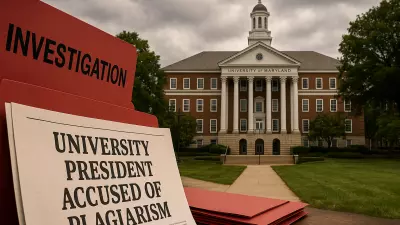When people refer to West Virginia as “Almost Heaven,” we think of the beautiful, quiet scenic areas like Black Water Falls, Canaan Valley and Dolly Sods.

However, our lawmakers just see money signs — and not very many of them.
Gov. Patrick Morrisey recently signed into law House Bill 2014 — one of his key priorities — which created the state’s microgrid program to encourage data centers to come to the Mountain State.
Residents in Tucker County are already fighting a proposed data center. A Virginia company, Fundamental Data, has applied for an air permit from the West Virginia Department of Environmental Protection for the “Ridgeline Facility.” It includes an off-the-grid natural gas power plant between Thomas and Davis, which will likely power the giant data center proposed for a site just a mile away from the county’s most heavily populated and tourist-attracting areas.
A microgrid is a small power plant that is usually attached to a larger national grid, but runs independently to power things like a college campus, hospital complex or, in this case, a data center. West Virginia’s new law allows “high impact data centers” to curtail local zoning ordinances, meaning their microgrids don’t have to attach to existing utilities.
HB 2014, as requested by Morrisey, originally included provisions that would have required electric utilities with coal fired plants to operate at a higher capacity — 69% compared to 40% — and hold a 45-day supply of coal on hand at all times, while most only stockpile a 30-day supply.
Lawmakers saw this bill as an opportunity to boost the state’s coal industry, but power companies said it would be difficult to meet those standards. Not only that, but meeting those standards would have raised electricity rates for customers.
The bill was amended dozens of times and passed without those standards, and Morrisey signed it into law. Now residents of Tucker County are worried about a proposed data center taking away from the serene beauty of their home.
As someone who grew up in Poca just across the river from the coal-powered John E. Amos Power Plant, I understand why you wouldn’t want a new one to pop up near your home. It’s never quiet — you can hear the beep beep beep of equipment backing up all night and the banging of construction, and when the towers release steam, it sounds like the end of the world (at least it did when I first heard it as a child). And coal definitely keeps the lights on at the plant 24/7.
In Virginia, which has the largest data center market in the world, there are local noise and lighting ordinances to protect residents. West Virginia residents won’t have the same protections.
My dad said during the 1970s, before air pollution was taken more seriously, ash from the John Amos plant would be all over the place in the mornings. Sometime in the 1990s, everyone on our street noticed spots on their cars that messed up the paint. My dad said the air pollution commission ran some tests on the spots that indicated they came from the power plant.
It only happened that one time, dad said, but it was worrisome then and it’s something to think about now as the Trump administration rolls back environmental regulations. For instance, the Department of Justice has been told to block states from enforcing their own regulations on coal — because President Donald Trump wants to revive “beautiful, clean coal.”
Not only are power plants loud, but data centers are as well. They create noise pollution, typically a low humming sound, which is the cooling system that must run constantly to keep the temperatures down. Many data centers also use a diesel powered back-up system in case they lose power, and those must be tested monthly. These generators can run between 85 and 100 dBA — 85 dBA is when hearing can be harmed.
Is all the noise worth it?
So why are we putting up with this noise? It must be because it’ll bring lots of jobs to the state, right? Not likely. Data centers are just buildings full of computers, and are largely automated. You ever wonder where the stuff you save on the cloud is stored, where the computers that make AI art are or where bitcoin is mined? In a data center.
Some facilities employ only 50 people. Most data center jobs come from the construction of the facilities, and are often contracted from out-of-state.
Aside from data centers not bringing jobs, they could cost ratepayers more money. Virginia has proposed two transmission lines for their data centers, and the lines could cost West Virginians more than $440 million, according to the Institute for Energy Economics and Financial Analysis
The two transmission lines, both of which cut through West Virginia, were proposed to help with growing demand for electricity from data centers. PJM’s transmission cost allocation methodology charges all ratepayers for the transmission infrastructure because it assumes that the “regional transmission costs could not be attributed to a single new user or class of users.” However the most recent Regional Transmission Expansion Plan processes shows that’s not the case.
While West Virginia is trying to use Virginia as an example on data centers, the state isn’t doing it the same way with regulations and protections.
“What you’re going to get if you do it this way is the worst players, the ones that didn’t need to be in Northern Virginia,” said Julie Bolthouse, director of land use at Piedmont Environmental Council in Virginia. “… the players that are wanting that lack of regulations because they didn’t want to abide by rules and didn’t want to or need to protect communities, which is worse for West Virginia and the communities. What West Virginia is doing is not what Virginia is doing.”
If lawmakers are serious about bringing data centers to the state, then they need to be serious about the consequences and set better regulations to protect residents who want to enjoy wild, wonderful West Virginia without noise cancelling headphones.







